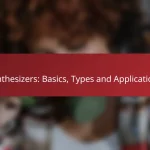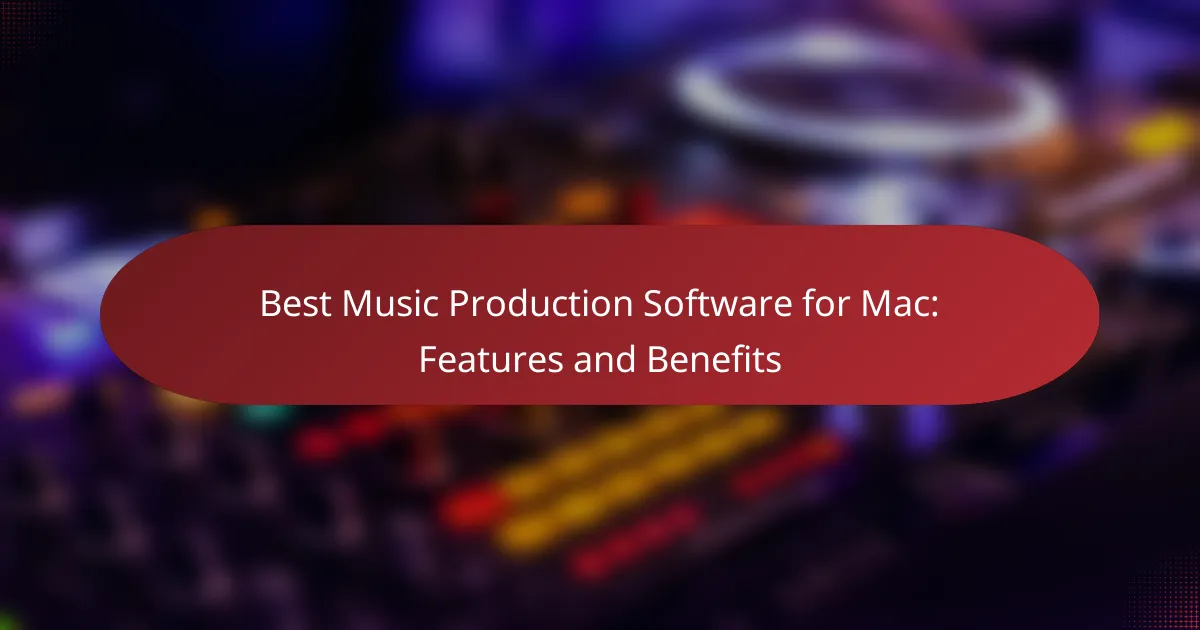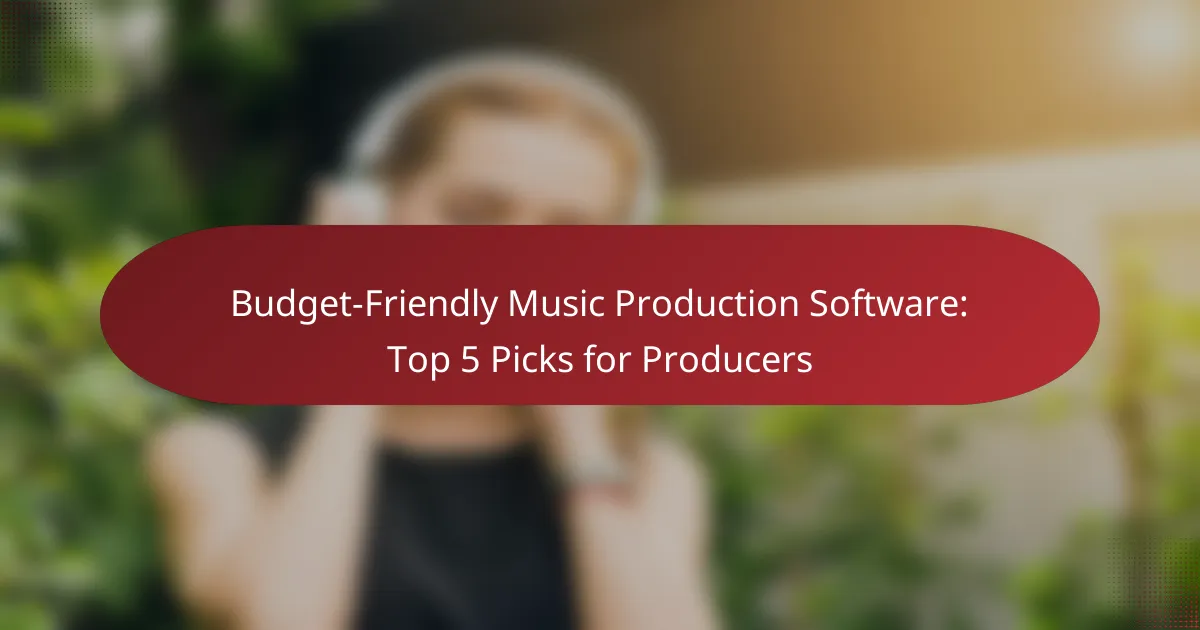Choosing the right music production software is crucial for maximizing your creativity in a home studio setting. With options like Ableton Live, FL Studio, and Logic Pro X, each tailored to different production styles, it’s important to select software that aligns with your workflow and budget. Prioritize features such as multi-track recording and audio editing capabilities to ensure a seamless production experience.

What are the best music production software options for home studios?
The best music production software for home studios includes Ableton Live, FL Studio, Logic Pro X, Pro Tools, and Studio One. Each option has unique features that cater to different production styles and user preferences, making it essential to choose one that aligns with your specific needs.
Ableton Live
Ableton Live is renowned for its intuitive interface and powerful live performance capabilities. It allows users to create, edit, and arrange music seamlessly, making it ideal for electronic music producers and live performers.
Key features include Session View for improvisation and Arrangement View for traditional linear editing. Consider starting with the Standard version, which offers a good balance of features for most home studio setups.
FL Studio
FL Studio is popular among beginners and experienced producers alike due to its user-friendly interface and extensive plugin support. It excels in beat-making and offers a wide range of virtual instruments and effects.
Its pattern-based workflow allows for quick composition and arrangement. The Signature Bundle is a great option for those who want access to additional plugins and features without breaking the bank.
Logic Pro X
Logic Pro X is a comprehensive music production suite exclusive to macOS users. It provides a vast library of sounds, loops, and samples, making it suitable for various genres, from pop to orchestral music.
The software includes advanced features like Flex Time and Flex Pitch for precise audio editing. If you’re a Mac user, the one-time purchase price offers excellent value for the extensive capabilities it provides.
Pro Tools
Pro Tools is considered the industry standard for professional audio editing and mixing. It is widely used in studios for film scoring and music production, offering powerful tools for recording and editing audio tracks.
While it has a steeper learning curve and higher cost, the subscription model allows for flexibility. For serious producers looking to work in a professional environment, investing in Pro Tools can be worthwhile.
Studio One
Studio One is known for its streamlined workflow and drag-and-drop functionality, making it easy to use for both beginners and seasoned producers. It combines recording, mixing, and mastering in one platform, which enhances productivity.
Its unique features, like the Arranger Track and Impact XT for drum programming, set it apart from competitors. The Artist version is a cost-effective choice for those starting out, while the Professional version offers advanced capabilities for more experienced users.
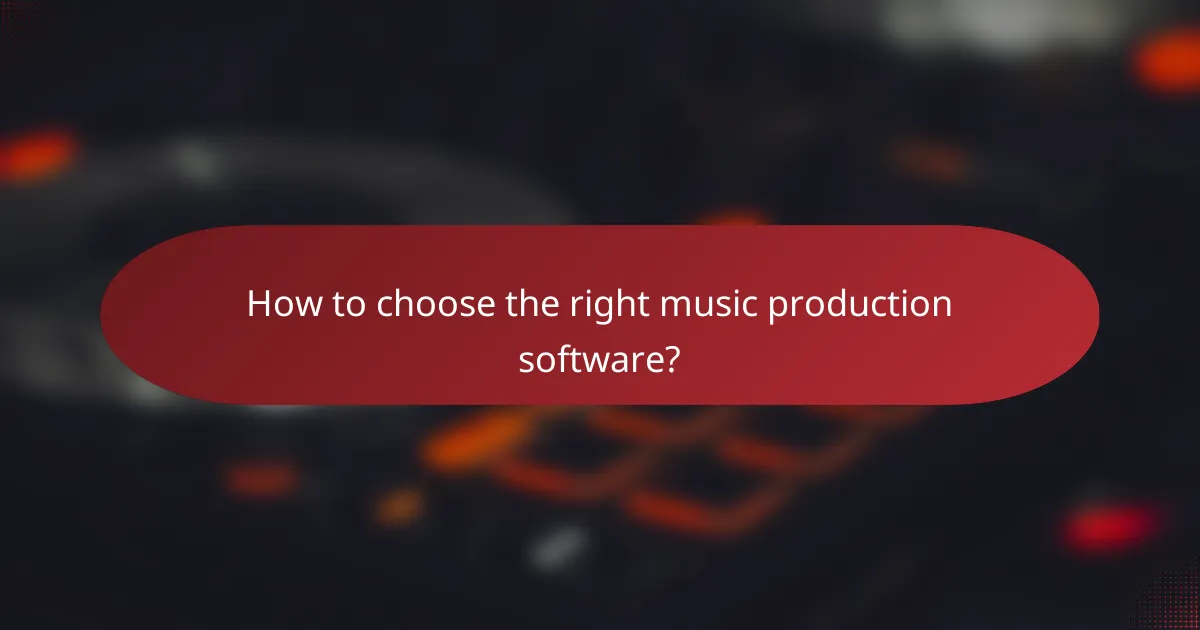
How to choose the right music production software?
Choosing the right music production software involves understanding your specific needs, workflow, and budget. The ideal software should enhance your creativity while being compatible with your existing setup.
Consider your workflow
Your workflow is crucial in selecting music production software. Think about how you create music—whether you prefer recording live instruments, using MIDI, or working primarily with samples. Each software has unique strengths that cater to different styles, so identify what aligns best with your process.
For instance, if you often collaborate with others, look for software that supports easy sharing and cloud integration. Alternatively, if you focus on electronic music, software with extensive virtual instrument libraries may be more beneficial.
Evaluate your budget
Budget is a significant factor when choosing music production software. Prices can range from free options to several hundred dollars for professional-grade tools. Determine how much you are willing to invest and explore software that fits within that range.
Keep in mind that some software offers subscription models, which can be more manageable for ongoing costs. Always check for student discounts or promotional offers that may lower the price.
Assess compatibility with hardware
Compatibility with your existing hardware is essential for a smooth music production experience. Ensure that the software you choose works well with your computer’s operating system, audio interface, and any MIDI controllers you plan to use.
Before purchasing, check the software’s specifications and user reviews to confirm compatibility. This step can prevent technical issues that could disrupt your workflow and lead to frustration.

What features should you look for in music production software?
When selecting music production software, prioritize features that enhance your creative process and workflow. Key elements include multi-track recording, built-in virtual instruments, audio editing capabilities, and plugin support, which collectively empower you to produce high-quality music from your home studio.
Multi-track recording
Multi-track recording allows you to capture multiple audio sources simultaneously, enabling complex arrangements and layering. Look for software that supports a high number of tracks, ideally in the range of 16 to 64, depending on your needs.
Consider the ease of use when managing tracks, such as the ability to mute, solo, or group tracks efficiently. This functionality is crucial for maintaining organization during the mixing process.
Built-in virtual instruments
Built-in virtual instruments provide a variety of sounds without the need for external hardware. Look for software that includes a diverse selection of synthesizers, drum machines, and sampled instruments to enhance your creative palette.
Check if the software allows for easy manipulation of these instruments, such as customizable parameters and effects. This flexibility can significantly expand your sound design capabilities.
Audio editing capabilities
Robust audio editing capabilities are essential for refining your recordings. Look for features like waveform editing, pitch correction, and time-stretching, which can help you achieve professional-quality results.
Additionally, consider the software’s user interface for editing tasks. A clear, intuitive layout can save time and reduce frustration during the editing process.
Plugin support
Plugin support is vital for expanding your software’s functionality. Ensure the software is compatible with widely used formats like VST, AU, or AAX, allowing you to integrate third-party effects and instruments seamlessly.
Evaluate the availability of both free and paid plugins to enhance your production capabilities. A good selection of plugins can significantly improve your sound quality and creative options.
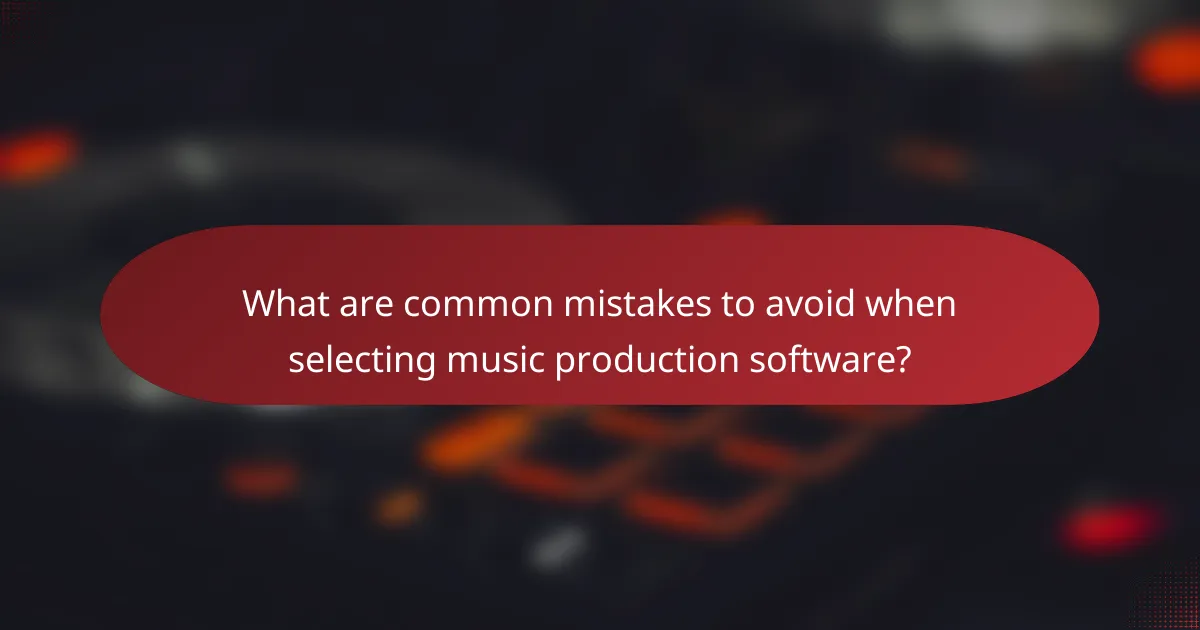
What are common mistakes to avoid when selecting music production software?
Common mistakes when selecting music production software include ignoring system requirements, overlooking user interface, and neglecting support and updates. Being aware of these pitfalls can help you choose software that fits your needs and enhances your home studio experience.
Ignoring system requirements
Many users fail to check the system requirements of music production software, which can lead to performance issues. Ensure your computer meets or exceeds the minimum specifications for CPU, RAM, and storage to avoid lag and crashes during production.
For example, if a software requires at least 8GB of RAM and your system has only 4GB, you may experience slowdowns. Always verify compatibility with your operating system, whether it’s Windows or macOS, to ensure smooth operation.
Overlooking user interface
The user interface (UI) of music production software significantly impacts your workflow. A cluttered or unintuitive UI can hinder creativity and make it difficult to navigate essential features.
Consider trying out demos or watching tutorials to assess how user-friendly the software is. Look for customizable layouts and clear labeling of tools, as these can enhance your productivity and ease of use.
Neglecting support and updates
Choosing software without considering the level of support and frequency of updates can lead to long-term issues. Regular updates often include bug fixes, new features, and compatibility improvements that keep your software relevant and functional.
Research the software’s support options, such as forums, customer service, and documentation. A strong support community can be invaluable for troubleshooting and learning new techniques, ensuring you get the most out of your investment.




